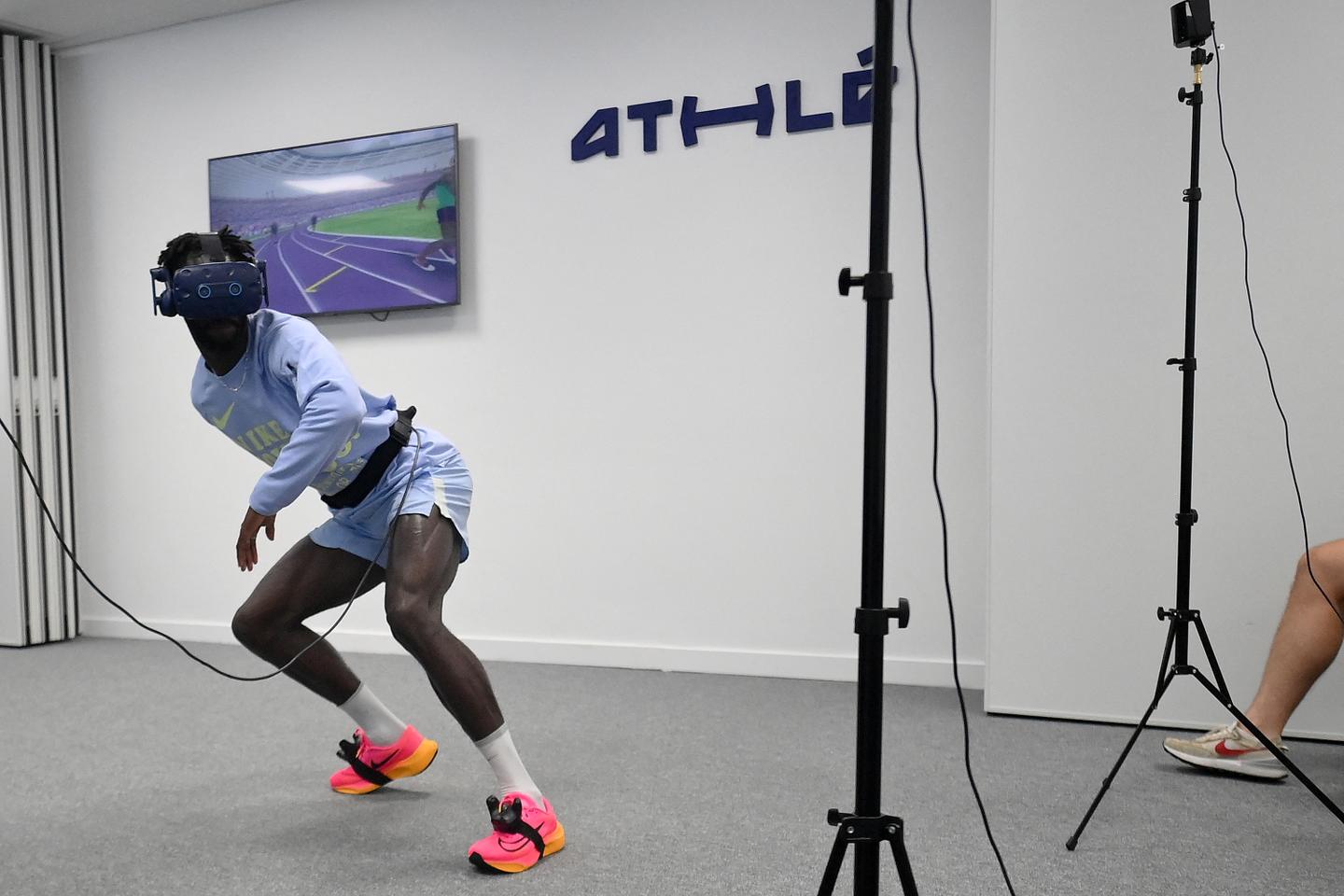
Suddenly, the black-walled, blind-walled workroom at the Faculty of Sports Sciences at Aix-Marseille University (AMU) is transformed into the Stade de France. By wearing a virtual mask stretched by researchers from the Institute of Movement Sciences (ISM), equipped with sensors on your hips and feet, you are dropped onto the purple track of the Dionysian fence, immersed in the atmosphere of competition, surrounded by digital twins of the qualified athletes.
The noise, the speed of the runners coming towards you, the light: everything is reproduced identically and gives a fantastic impression of reality. Since January 2023, this unique tool, developed by ISM, has been used by the French 4 x 100m relay teams and their coaches. The technological aid was developed as part of the Revea priority research programme, launched by the State to improve performance in high-level sports using virtual reality. With a short-term goal, the race for medals in Paris 2024.
No French athlete, male or female, has ever finished in the top 20 of the year in the 100m. To compete with the big nations in the sprints, on Thursday 8 August in the series and Friday 9 August in the finals, France knows it must be perfect in the transfer of the three baton that punctuate its races.
The French Athletics Federation (FFA) has decided to seek further excellence in the field of three-dimensional scientific and national scientific excellence. “ The coaches had a simple request: help them improve the speed exchange between two runners during a relay handoff. More specifically, improve the moment when the receiver starts the action.“It’s a great honor,” sums up Gilles Montagne, a professor at AMU, a neuroscientist and the leader of the Revea project responsible for the relay.
“editable parameters”
In a team race, this moment of transmission is crucial. The athlete must be allowed to reach maximum speed when his partner joins him. If he starts too early, he risks going outside the permitted zone. Too late, he will force his partner to slow down.
In the real world, coaches have their own way of doing things: they mark the track to coordinate between the giver and the receiver. When the former reaches this point, the latter must start. With this implementation, the virtual tool allows you to work autonomously. The athlete, equipped with a mask and sensors, sees his teammate stumble and must react at the right moment, starting the race with just one or two clicks. “ The coach can adjust all factors: mark position, partner speed, competitors speed… » Loic Chomin, a postdoctoral researcher at AMU who played a role in interacting with the world of sports, explains.
You have 58.52% of this article left to read. The rest is reserved for subscribers.

“Certified gamer. Problem solver. Internet enthusiast. Twitter scholar. Infuriatingly humble alcohol geek. Tv guru.”





